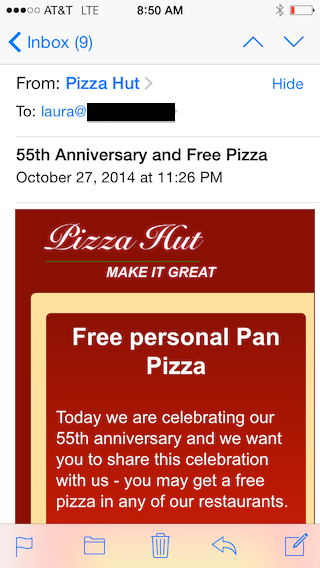Email Authentication in a nutshell
 There are 3 types of authentication currently in use for email.
There are 3 types of authentication currently in use for email.
- DKIM
- SPF
- DMARC
The different strategies do different things with email.
- DKIM cryptographically signs emails, preventing changes in transit, and designates a “responsible domain” through the d= value in the signature.
- SPF compare the sending IP and the envelope from (also known as the bounce string, return path or 5321.from) domain to determine if that IP is authorized to send mail using that envelope from domain.
- DMARC uses DKIM authentication (d= value) or the SPF authentication (envelope from) to authenticate the visible from address (5322.from). DMARC requires that the d= value or the SPF value are in the same “organizational domain” as the visible from address. There is more data about this in my brief DMARC primer post from April 2014. In addition to authenticating the visible from address, there are two things senders can get from publishing a DMARC record. The first is a reporting scheme where you can get reports every time one of your email messages fails SPF or DKIM authentication. The second is a policy process where you ask receiving ISPs to implement a particular policy when the authentication fails (quarantine or reject).
We recommend all our clients authenticate with DKIM and SPF. The specifics of how to authenticate depend on the overall mail stream of the sender and technology available at different service providers.
Our recommendations for DMARC are a little more complex, due to the newness of the protocol and the choices that DMARC offers to senders. We’re currently recommending that clients be aware of the availability of DMARC reporting and start internal discussions and plan to implement reporting in the future. Managing DMARC reports requires some level of infrastructure to accept and process the incoming reports, and this will need to be planned for.
It’s important to understand that even if every message leaves fully authenticated different processes during mail sending (forwarding, etc) may result in authentication failures at the recipients. This means senders publishing a p=reject policy will lose legitimate mail. In the absence of security concerns, we’re not recommending publishing a policy statement (p=reject or p=quarantine) at this time. For senders who still want to implement DMARC we’re currently recommending that clients collect failure reports for a period of time (6 – 12 months in cases with complex mail systems) before making the decision to publish a p=reject record. Senders with security concerns can implement a p=reject message, but need to be clear that this may result in legitimate mail being lost.
